One early spring day, when the first signs of the season’s change began to appear, I took part in the special public opening of the Inui Street at the Imperial Palace. To be ready for the 9:00 a.m. gate opening, I arrived slightly early—at 8:30 a.m.—in front of the Sakashita Gate. A large crowd had already gathered. Among them were people from all over Japan, as well as a noticeable number of tourists speaking foreign languages, reminding me once again how the allure of the Imperial Palace extends far beyond Japan’s borders.
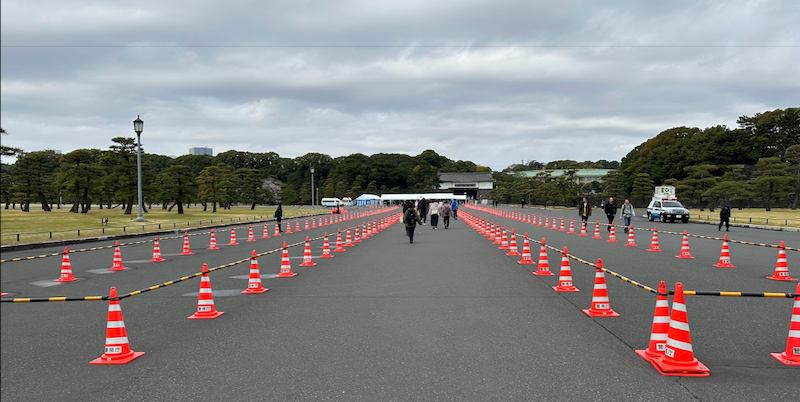
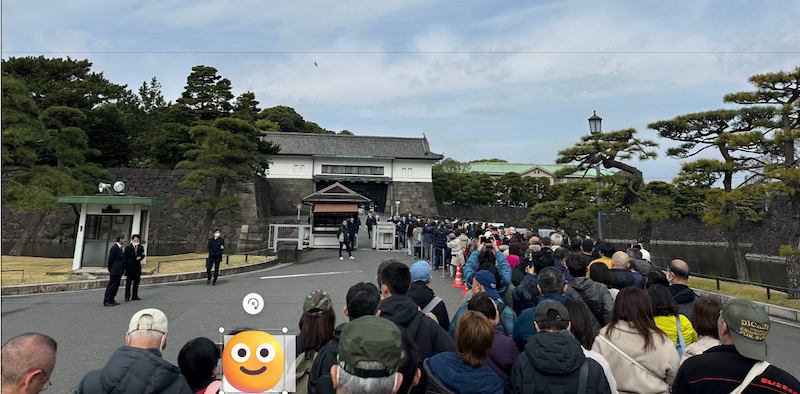
At precisely 9:00 a.m., the line began to move in an orderly fashion. The security check was surprisingly smooth, and the courteous demeanor of the guards left a lasting impression. As we approached Sakashita Gate, its majestic presence gradually came into full view. This gate, once used by shoguns and high-ranking officials during the Edo period, is normally off-limits to the public—so the closer we got, the more my heart raced with excitement.
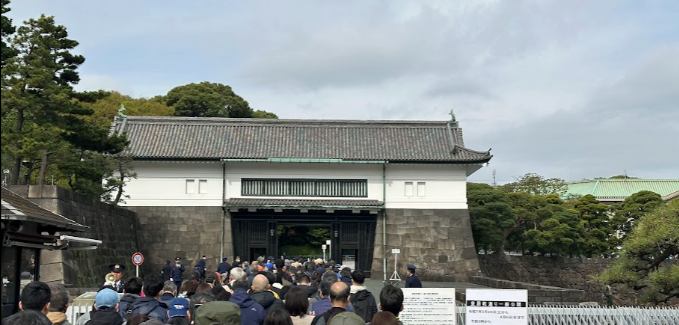
Sakashita Gate was originally one of the main entrances to Edo Castle, known as a “front gate” (omote-go-mon). Since the Meiji era, it has served as an official access point to the Imperial Palace (formerly the Imperial Castle). Surrounded by stone walls, the gate features a stately wooden roof structure, topped with multiple layers of meticulously arranged tiles—each layer seemingly whispering tales from centuries past. Passing through the gate felt like stepping back in time, as though I had been momentarily enveloped by the very air of the Edo period.
After passing through the gate, I instinctively turned around to take in the rarely seen view of its reverse side. The intricately joined wooden beams and the delicate curves of the roof tiles quietly conveyed a sense of understated beauty.
To the right stood the Fujimi Yagura turret. No matter how many times I see it, its presence never ceases to captivate. The stark contrast between its white plaster walls and black roof tiles is striking, while the gently sweeping lines of the roof embody the essence of Japanese architectural aesthetics. As one of the three remaining turrets of Edo Castle, Fujimi Yagura was once said to offer a clear view of Mount Fuji—hence its name. Although the mountain is now obscured by the skyscrapers of central Tokyo, the turret still stands in serene dignity, exuding an air of quiet refinement.
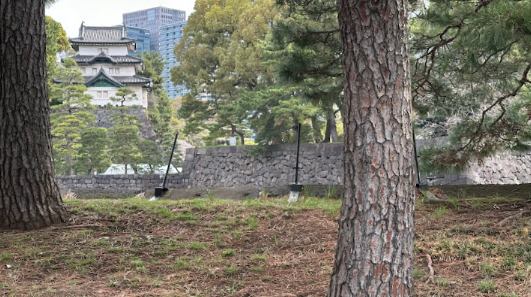
As I stood there, I suddenly noticed a few cedar trees standing between myself and the turret. Viewed through the slender trunks and branches, the Fujimi Yagura appeared like a traditional Japanese painting framed within nature itself. I couldn’t help but stop and take it all in.
In that moment, time seemed to stand still—the perfect harmony between man-made structure and natural surroundings created a breathtaking balance, each element enhancing the beauty of the other.
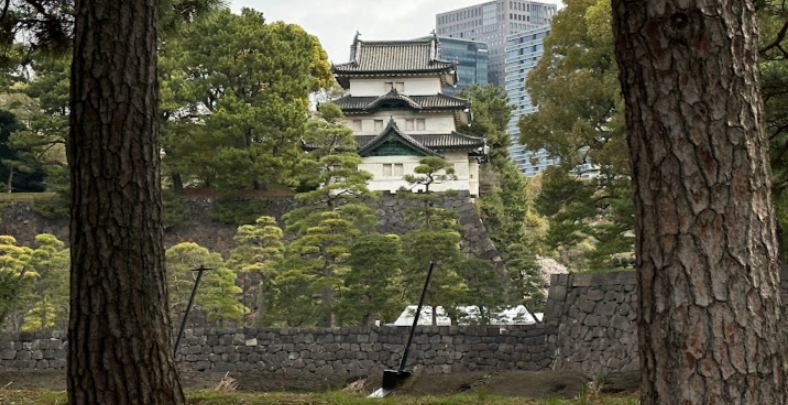
At last, I stepped into Inui Street. This time, I was experiencing the path from a fresh perspective—walking from the Sakashita Gate side, as opposed to the opposite direction I had taken on my previous visit.
To my right stretched the Hasuike Moat, its still waters bordered by a solemn stone wall. The scene unfolded like a monochrome ink painting, its quiet elegance leaving a deep impression.
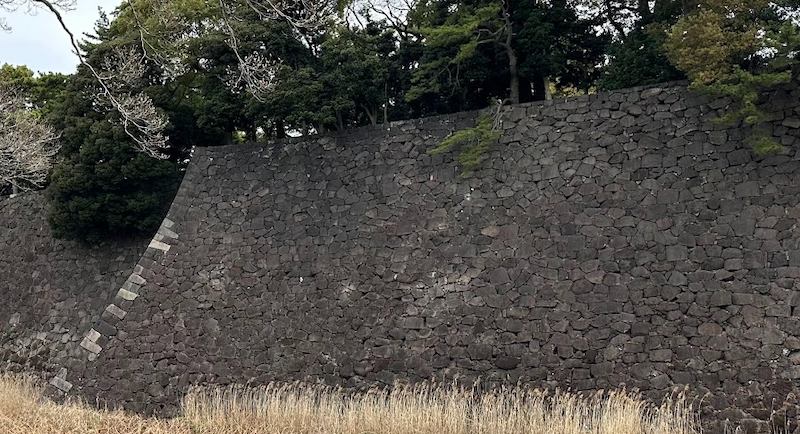
The Hasuike Moat, originally constructed as part of Edo Castle’s outer defenses, has long since outlived its military function. Today, it serves as a place of tranquility and serenity for those who visit. I took the time to pause and examine the height and craftsmanship of the stone walls—their precise arrangement, weathered by centuries of wind and rain, yet still standing strong. I was awestruck by the enduring skill and ingenuity of those who built them.

Although the cherry blossoms along the moat had not yet reached full bloom, the scene was no less enchanting. Various types—Somei Yoshino, weeping cherries, and wild mountain sakura—had begun to open, releasing a faintly sweet fragrance carried on the breeze. The swelling buds at the tips of the branches held a quiet sense of promise, a gentle reminder that spring was near.
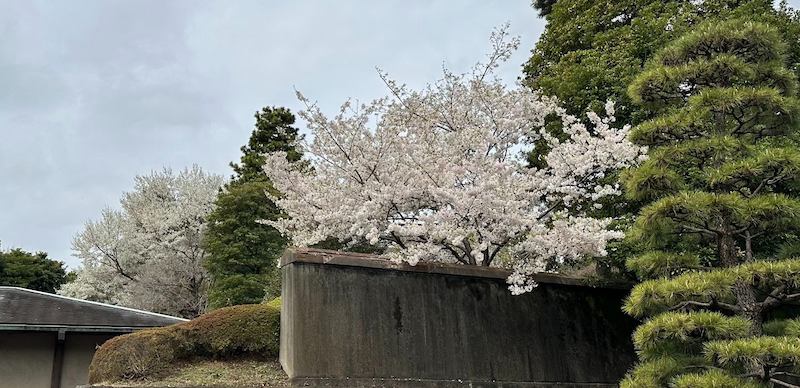
A little farther along, Takeshita Street came into view on the left. On my previous visit, it had been bustling with tour groups, but now it lay still, wrapped in a deep, almost surreal calm. In spaces steeped in history, it’s often the absence of sound that defines the atmosphere—making the surroundings feel even more profound and unforgettable.
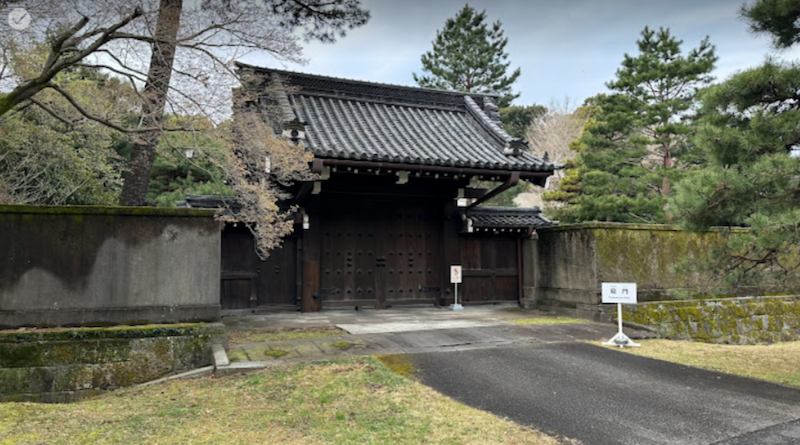
Beyond this point lay uncharted territory for me. My pace quickened instinctively, heart beating with anticipation. The first thing to catch my eye was a gate known as Tsubonemon.
This gate once served as the entrance to the Ōoku, the inner chambers of Edo Castle where the women of the shogun’s court lived. I was astonished to learn of its existence for the first time and felt a deep sense of connection to the layered history surrounding me. Although Google Maps labels the Ōoku as part of the main keep, standing here made it clear that the actual access point had been elsewhere. Some truths, it seems, can only be discovered by setting foot on the very ground they occupy.
Tsubonemon is an exquisite example of traditional Japanese architecture, with wooden pillars and a classic tiled roof. There was a quiet dignity in its appearance—an unspoken presence that suggested it had once guarded the threshold to a highly exclusive world. It felt like a sacred boundary, marking the entrance to the secretive, complex realm of the Ōoku.
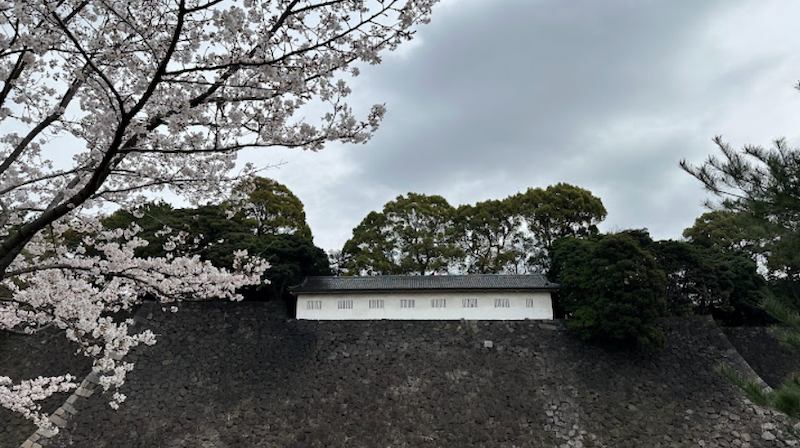
As I continued on, Fujimi Tamon came into view atop the stone wall to my right. On my previous visit, I had only caught a glimpse of it from an angle, but this time, I was able to admire its full grandeur head-on. In the Edo period, this tamon-yagura—a long, corridor-like turret—was used by feudal lords and high-ranking officials as a waiting area before their official audiences. Its architectural precision speaks volumes about the sophistication of Japanese castle design.
What made the sight truly exceptional, however, were the cherry trees blooming just in front of it. With pale pink blossoms gently framing the view, Fujimi Tamon stood as a breathtaking symbol of wa no bi—the refined beauty of Japanese aesthetics. The delicate balance of serenity and splendor in that scene felt like a painting etched into memory, a perfect moment of harmony between nature and history.
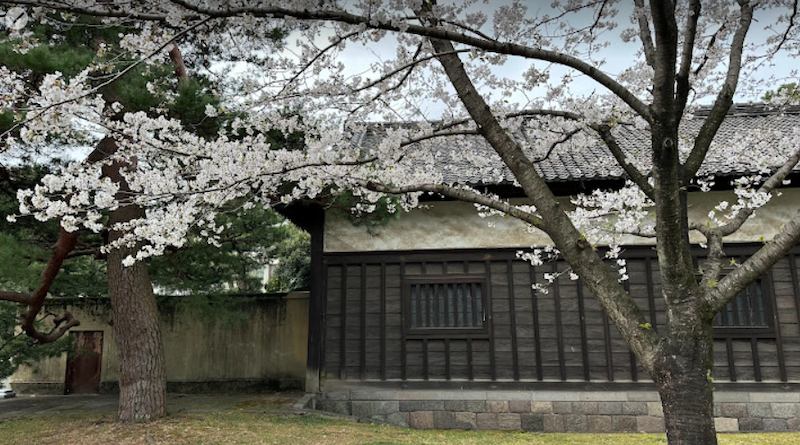
As I ventured deeper into the grounds, a structure appeared on my left—Mon-nagaya. It was my first time seeing this historic building, and I couldn’t help but marvel: “I can’t believe such a structure from centuries past still stands today.” Its dark, almost blackish-brown walls exuded a profound sense of age and gravitas. The blooming cherry blossoms in the foreground created a striking contrast, as if the entire scene had been artfully staged like a theatrical set.
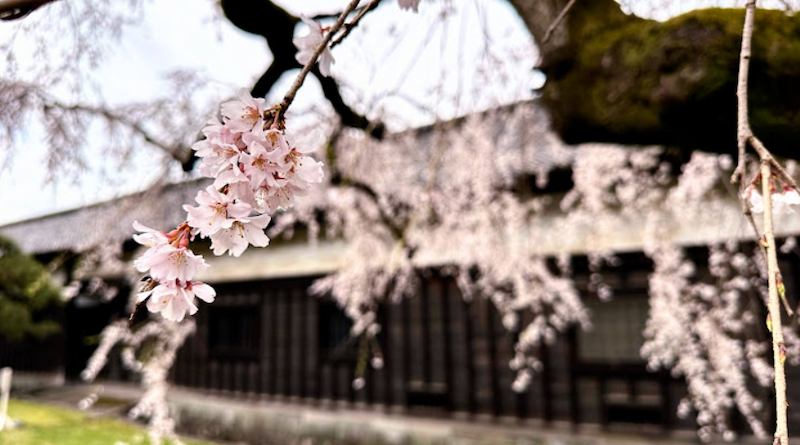
Continuing on, the path suddenly opened up, and a wide moat appeared before me. At first glance, it looked like a peaceful, reflective pond. Consulting the nearby signboard, I learned this was known as the Dōkan-bori. The name stirred a faint recognition, and as I turned it over in my mind, it hit me—Ōta Dōkan. Long before Tokugawa Ieyasu entered Edo, it was this brilliant military commander who, during the Muromachi period, laid the foundation for what would eventually become Edo Castle.

There’s a special kind of thrill when a place name or architectural feature suddenly connects you to a historical figure—it’s a moment that transcends typical sightseeing. It feels like a privilege reserved for those who truly know the past, and it brings a deep, unmatched joy. Gazing at the sky and trees reflected on the surface of the moat, I couldn’t help but feel that Dōkan’s enduring spirit was somehow mirrored in those still waters, stretching across the centuries.
To the left of Dōkan-bori—just beyond the dense grove of trees—once stood Kōyōzan Tōshōgū. This shrine was built within the grounds of Edo Castle by the third shogun, Tokugawa Iemitsu, in honor of his grandfather, Tokugawa Ieyasu. What made it special was that, despite its location inside the castle, ordinary citizens were allowed to visit. Though it is now closed to the public, I felt compelled to confirm its location. I pulled out my smartphone and opened an old Edo-period map. Aligning the historical layout with the present-day scenery, I found the spot—and in that moment of recognition, I was overwhelmed by a strange and moving sensation, as if the past and present were quietly joining hands.
Leaving behind the tree-covered hill of Kōyōzan, I continued walking until Nishi-Kikkōbashi appeared to my right. This bridge, gracefully spanning atop a beautifully assembled stone wall, once served both defensive and logistical functions in the Edo period. Today, it is an integral part of the landscape, radiating a quiet elegance.
Each stone in the wall beneath the bridge has been meticulously placed, with angles and weight carefully calculated—a testament to the precision and pride of the craftsmen who built it. As we casually walk across it today, it’s easy to overlook the immense effort and skill that went into its creation. But to pause and imagine the toil behind its construction is to fully appreciate that this is far more than just a bridge—it is a work of enduring human achievement.
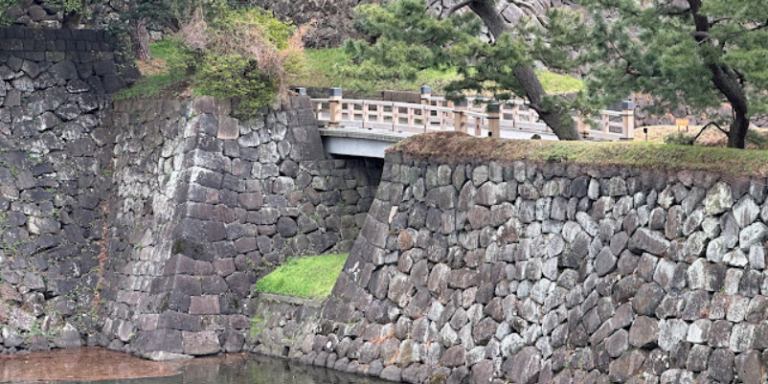
As my walk through Inui Street neared its end, the view opened up once more, revealing the vast expanse of Inui-bori before me. A carefully manicured lawn stretched out alongside stately pine trees, and beyond them rose a commanding stone wall. The sheer scale and serenity of the scene rendered me speechless—it was a space of quiet majesty.
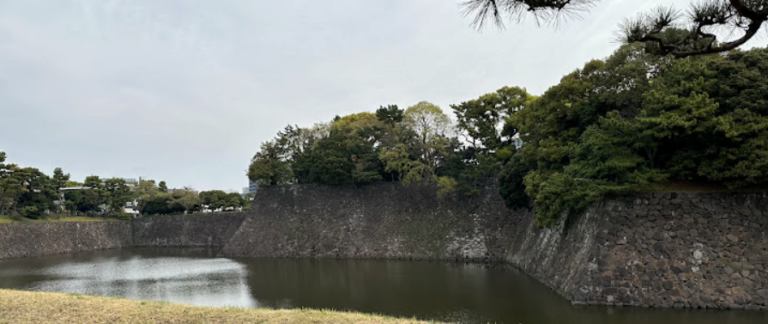
Atop that stone wall once stood the base of the castle’s main keep, or tenshudai. While the towering main donjon of Edo Castle no longer exists and has never been rebuilt, I let my imagination fill in the void. Over 400 years ago, a grand keep stood here—five tiers, seven levels, reaching a height of 44.8 meters. It was a symbol of Tokugawa authority, gazing down over the city of Edo. Even in its absence, the very thought of it was enough to stir the soul.
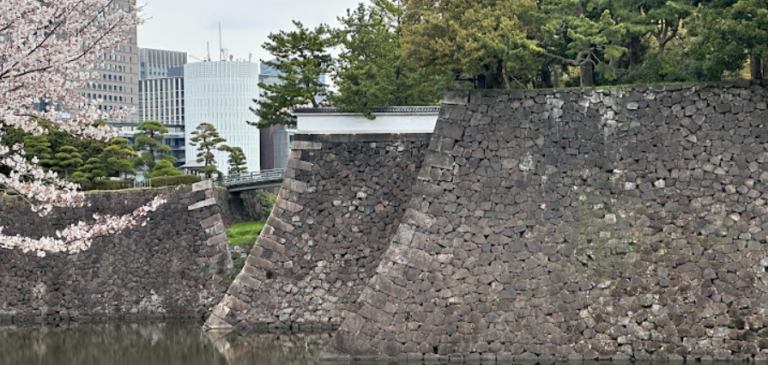
At last, the exit to Inui Street came into view—Inui Gate, standing with quiet dignity. Normally, one can only glimpse it from a distance, walking the castle’s outer perimeter. But today, I stood before it up close, able to appreciate its details: the interlocked wooden pillars, the plain but commanding doors, and the open world just beyond. This gate is said to have been relocated from Kōyōzan, adding yet another layer to its storied history. And standing before it now, I could feel that history still alive—quiet, weighty, and unwavering.

The moment I passed through the gate, the entire journey through Inui Street played back in my mind like a beautifully composed film. The stone walls, the moats, the cherry blossoms, the turrets—and the memories of the people whose lives once animated these grounds—all came rushing back.
This had been far more than a sightseeing trip. It was a rare and moving experience, a journey through both time and space, where history wasn’t just observed but truly felt.
At Journey’s End
This special public opening of Inui Street offered far more than a pleasant walk—it deepened my appreciation for the Imperial Palace as a place where layers of history and natural beauty intertwine. Every structure, every moat name, carries a story. And whether or not we notice those stories can completely transform the quality of our journey.
So the next time you visit the Imperial Palace, I encourage you to truly listen to each scene, to search for the narratives hidden in the details. You may just find yourself on a personal journey through history—one that no guidebook can offer.
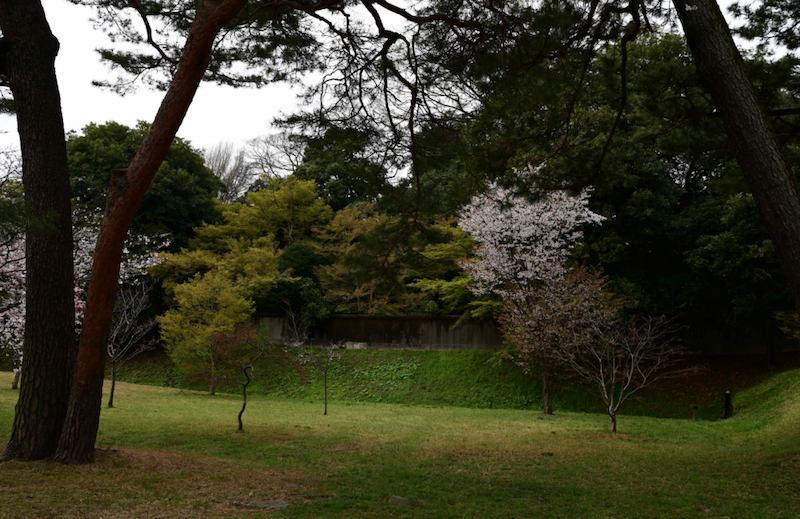
For a Complete Guide to Inui Street
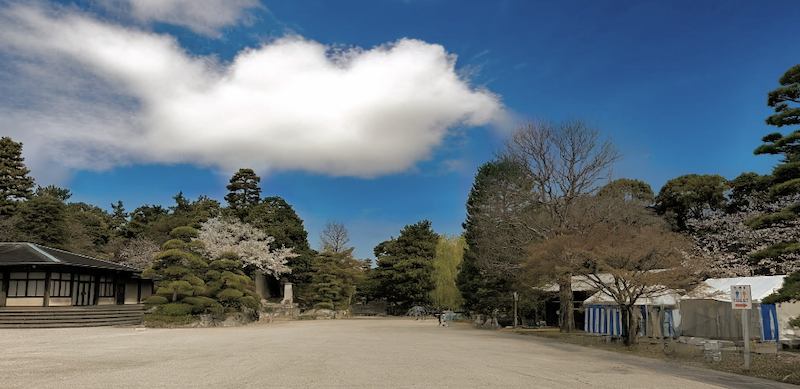

comment